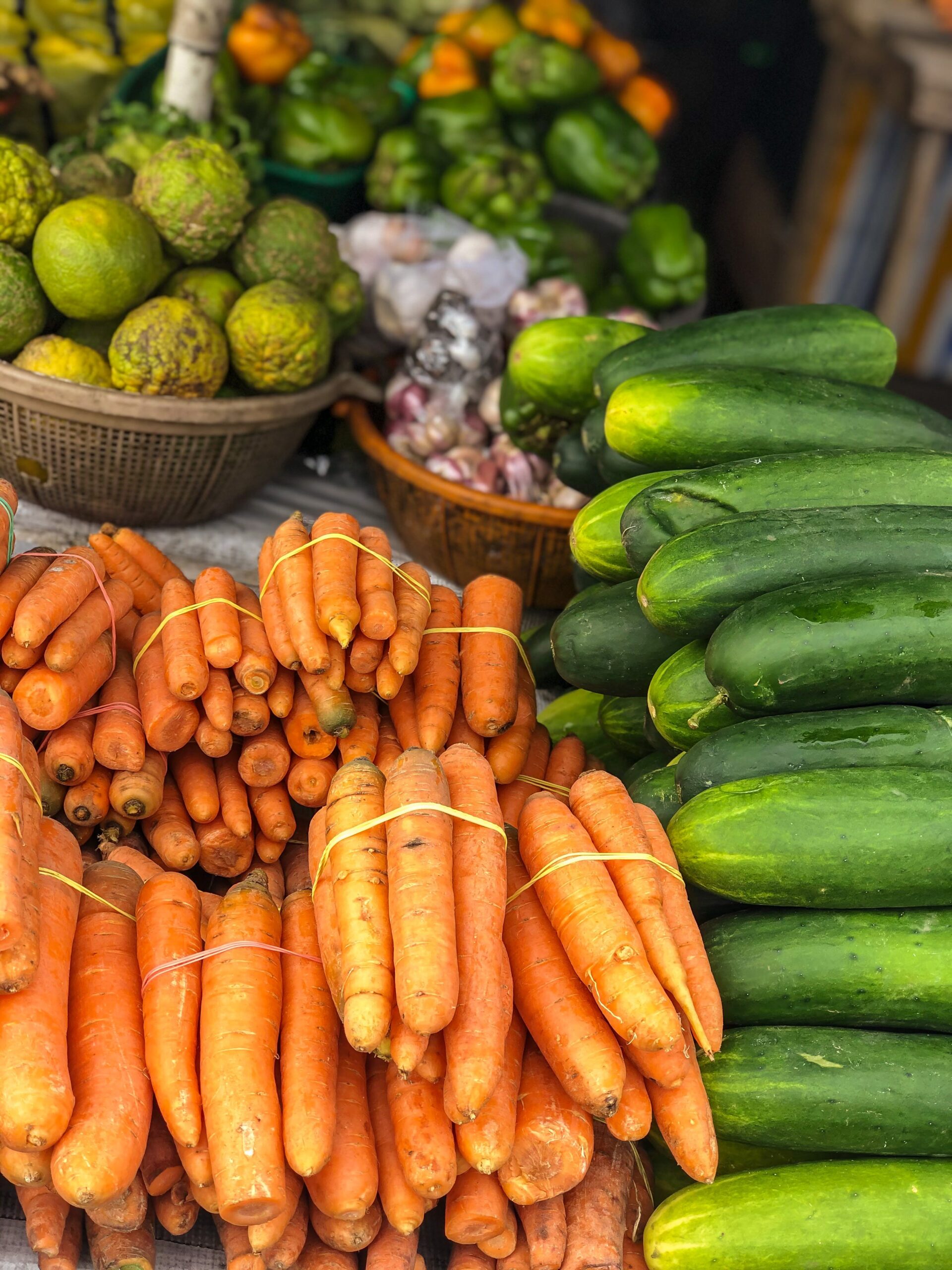Stretching groceries further can involve batch cooking and using versatile ingredients. Plan meals around pantry staples and seasonal produce for cost efficiency.
Using herbs and spices to diversify the flavors, even simple staples can transform into a variety of satisfying meals. The art of meal prepping plays a crucial role in this endeavor, enabling the use of leftovers in imaginative ways. This approach not only stretches your grocery budget but also supports sustainable eating habits. By embracing these strategies, any home cook can produce delicious, cost-effective meals throughout the week.

Overview Of Stretching Groceries
Feeding your family can be pricey. Yet, with a few clever tricks, you can make meals last longer. This means fewer trips to the store and more money in your pocket. Let’s find out how to turn a cart of groceries into a week of feasts. Sticking to a food budget helps control spending. It also reduces waste. By buying only what we need, we make sure each item ends up on our plates, not in the trash.
Key Strategies For Getting The Most Out Of Your Groceries
Getting creative with leftovers, buying in bulk, and planning can stretch your food further. Check out these strategies:
- Shop with a list to avoid impulse buys.
- Bulk items save cash, as long as they’re used before spoiling.
- Leftovers become tomorrow’s ingredients.
Use these tips to reinvent your meals and maximize your grocery haul!

Smart Shopping: Making The Right Choices
Stretching groceries further is about smart shopping and meal planning.
It means making choices that maximize your budget while maintaining a nutritious diet.
It’s not just about saving money, it’s about spending it wisely on the right ingredients.
Essentials Of A Grocery List: What To Include
A well-planned grocery list is your first step to efficiency.
Focus on staples that can be used in multiple meals.
Include the following:
- Protein sources like beans, tofu, or chicken
- Whole grains such as rice, pasta, or quinoa
- Long-lasting vegetables like carrots and potatoes
- Fruits for snacks and desserts
- Dairy or plant-based alternatives for calcium
Seasonal Shopping: Benefits And Meal Ideas
Seasonal produce tastes better costs less, and brings variety to your meals.
Here is a table of seasonal produce and meal ideas:
| Season | Produce | Meal Idea |
|---|---|---|
| Spring | Asparagus | Grilled asparagus with lemon |
| Summer | Berries | Berry fruit salad |
| Autumn | Pumpkin | Pumpkin soup |
| Winter | Kale | Kale and sausage stew |
Bulk Buying: Saving Money With Larger Quantities
Bulk buying can lead to significant cost savings.
Opt for dry goods and pantry essentials that last.
Think about these items:
- Rice, pasta, or other grains
- Canned tomatoes and beans
- Cheeses that can be frozen
- Peanut butter or oats
Label and date everything you store.
Use what you have before buying more.
This prevents waste and maximizes your savings.
Meal Planning To Save Money
Saving money becomes easier with smart meal planning. It’s not just about spending less; it’s about spending smart. Let’s explore tips for designing a flexible meal plan, using leftovers creatively, and prepping meals in advance. These strategies ensure maximum savings while enjoying delicious and nutritious meals. Ready to stretch your groceries further? Let’s dive in.
Designing A Flexible Meal Plan
A flexible meal plan matches your budget and lifestyle. Start with staples like rice, pasta, and beans. Add variety with seasonal fruits and veggies for nutritional balance. Plan for meals that use similar ingredients to reduce waste.
Use this simple template to get started: Continue for each day of the week
| Day | Main Ingredient | Meal Idea |
|---|---|---|
| Monday | Rice | Stir-fry with veggies |
| Tuesday | Beans | Bean tacos |
Incorporating Leftovers Creatively
Leftovers offer an opportunity for creativity. Transform last night’s chicken into a savory wrap or salad topping. Mix and match sides for a completely new dish.
- Frittatas: Perfect for leftover veggies
- Quesadillas: Great with leftover meats and cheese
- Soup: Combine various leftovers in a tasty broth
More leftover ideas
Prepping Meals In Advance For Time And Savings
Meal prepping saves time and money. Cook in bulk and store portions. This prevents the temptation of takeout on busy days.
Follow these steps:
- Pick one day of the week for bulk cooking
- Prepare large batches of versatile basics
- Divide into single servings and store
Nutritious And Economical Recipe Ideas
Finding new ways to stretch your groceries can be both fun and efficient. It’s not just about saving money; it’s about being resourceful with what you have. These nutritious and economical recipe ideas will help you create satisfying meals without breaking the bank. Let’s focus on dishes that yield more, use pantry staples effectively, and cut down costs with vegetarian options.
High Yield Dishes: Feeding More For Less
Maximizing your meal portions while minimizing expenses is key. Think big-batch cooking with a focus on ingredients that expand. Dishes like soups, stews, and casseroles not only offer generous servings but also store easily for future meals. Here’s an example:
| Recipe | Key Ingredients | Number of Servings |
|---|---|---|
| Hearty Lentil Stew | Lentils, Carrots, Tomatoes, Onions | 6-8 |
Utilizing Pantry Staples For Healthy Meals
Your pantry may already have the foundations for a nutritious meal. Grains, such as rice and pasta, are perfect starters. Pair them with canned beans or veggies to get healthy meals in no time. Here are a few pantry heroes:
- Whole grain pasta
- Canned tomatoes
- Quinoa
- Canned chickpeas
Combine these for endless meal possibilities.
Vegetarian Options To Cut Down On Costs
Meat can be pricey. Swapping it out for vegetarian proteins like beans or lentils saves money. These ingredients are not just affordable; they’re also packed with nutrients. Try recipes like:
- Bean chili
- Lentil curry
- Stuffed bell peppers with rice and beans
Each dish brings flavor and variety to your table without straining your budget.
Understanding Food Preservation
Stretching groceries further means getting creative in the kitchen. Knowing how to preserve foods can ensure they last longer, saving money and reducing waste. This section dives into simple techniques that anyone can use to keep their produce fresh and tasty for extended periods.
Techniques To Extend Freshness Of Produce
Proper storage is key to prolonging the life of fruits and vegetables. Here are some tips:
- Separate ethylene-producing from ethylene-sensitive produce to prevent premature ripening.
- Store leafy greens with a paper towel in an airtight container to absorb excess moisture.
- Use airtight containers for chopped veggies to keep them crisp and fresh.
Freezing And Canning: Long-term Storage Solutions
Freezing and canning are excellent ways to store food for months. Check this guide:
| Type | Method | Benefit |
|---|---|---|
| Freezing | Blanch, cool, then freeze in portions. | Retains nutrients and taste |
| Canning | Use pressure canning for veggies. | Shelf-stable for years |
The Role Of Dehydration And Pickling
Dehydration removes water, leaving a concentrated flavor. Pickling uses vinegar to preserve. Benefits of both include:
- Long shelf life without refrigeration.
- Transforms flavors, offering unique taste.

Resourceful Cooking Tips And Tricks
Getting creative in the kitchen doesn’t just unleash your inner chef; it also helps stretch your grocery budget. Clever cooking methods can transform modest ingredients into filling and nutritious meals. Keep reading to discover tips that turn kitchen staples into culinary masterpieces while being gentle on your wallet.
Stretching Protein Sources In Dishes
Protein is vital, but it can be costly. Here’s how to make the most of it:
- Combine beans with meat in recipes to add bulk and nutrition.
- Use eggs to extend protein in meals; they’re affordable and versatile.
- Stretch ground meat by adding oats or breadcrumbs to patties and meatballs.
Revitalizing Wilted Vegetables And Stale Bread
Don’t toss them yet! These tricks bring life back to your groceries:
- Give vegetables a cold bath to revive their crispness.
- Sauté wilted greens like spinach or kale for a delicious side.
- Revive stale bread in the oven; it’s great for croutons or breadcrumbs.
Creating Broths And Stocks From Scraps
Scraps can give a second round of flavor. Here’s how:
- Save vegetable peelings and trimmings in the freezer.
- Collect bones from meat and store them until you have enough for a broth.
- Simmer your scraps in water for homemade stock that beats store-bought.
Avoiding Waste With Proper Food Storage
Avoiding waste starts with how we store our food. Proper storage not only extends the life of our groceries. It also saves money. It’s time to get smart about food storage!
Best Practices For Refrigerating And Freezing Food
Keeping food fresh is essential. Refrigeration slows bacterial growth. Freezing can preserve items for months. Here’s how to do both effectively:
- Check temperatures: Your fridge should be at or below 40°F. Your freezer should be at 0°F.
- Use airtight containers: This prevents freezer burn and maintains flavor.
- Label everything: Write the date on the containers. This helps you use older items first.
- Don’t overpack: Air needs to circulate around food for proper cooling.
Decoding Expiration Dates And Food Safety
Expiration dates can be confusing. “Best by” doesn’t always mean “unsafe after.” Here’s a quick guide:
| Term | Meaning |
|---|---|
| Best By: | Peak quality date, not a safety deadline. |
| Sell By: | For store management, not the consumer. |
| Use By: | Last recommended day for top quality. |
Trust your senses too. If it smells or looks off, it’s time to throw it out!
Organization Techniques For A No-waste Kitchen
Staying organized is key. Here’s how to keep your kitchen tidy:
- First In, First Out: Use older items before opening new ones.
- Clear containers: See what you have to avoid buying doubles.
- Group similar items: Put all dairy or veggies together.
- Create an eaten zone: Place items to use soon in one spot.
A clutter-free fridge means no item gets forgotten. Say goodbye to waste!
Community Resources And Additional Support
Welcome to the realm of savvy shopping and sustainable living! Our journey today explores how community resources and additional support can stretch our grocery budget while enriching our diets. Let’s dive into the world of food co-ops, community gardens, and tech tools that make thrifty living a breeze.
Food Co-ops And Bulk Stores: Are They Worth It?
Food co-ops and bulk stores offer unique savings. Their members pool resources to buy in large quantities. This results in lower prices for you.
- Quality products: Bulk stores provide whole foods at reduced costs.
- Membership benefits: Co-ops often give discounts and rebates to members.
- Eco-friendly: Less packaging means less waste.
Community Gardens And Csas: Fresh, Affordable Produce
Community gardens and Community Supported Agriculture (CSA) programs bring fresh produce to your table. They connect you with local farms.
| Resource | Benefits |
|---|---|
| Community Gardens | Grow your own food for less. |
| CSAs | Seasonal produce at a fraction of the cost. |
Both options support local agriculture and provide nutritious options for your meals.
Apps And Online Tools To Track Sales And Manage Inventory
Technology plays a pivotal role in maximizing grocery savings. Apps and online tools help you keep track of sales and manage what you have at home.
- Sales Tracking Apps: Get alerts for discounts at nearby stores.
- Inventory Management: Know what you have to prevent overbuying.
- Meal Planning Tools: Plan meals around sales and inventory.
Strategic use of these tools can lead to impressive savings on groceries.

Ending Words
Crafting meals that stretch your grocery haul is both a skill and an art. By embracing creativity and these savvy ideas, you can transform simple ingredients into nourishing, enjoyable dishes. Remember, planning is key to maximizing your pantry and minimizing waste.
Frequently Asked Questions Of Stretch Groceries Further Meal Ideas
What Foods Can You Buy That Stretch?
- Grains and Legumes: Rice, pasta, quinoa, lentils, and beans are inexpensive, filling, and versatile. They can be the base of many meals and are great for bulk cooking.
- Vegetables: Root vegetables (like potatoes, carrots, and sweet potatoes), cabbage, and leafy greens are usually affordable and nutritious. They can be used in soups, stews, casseroles, and stir-fries.
- Proteins: Whole chickens, ground meat, and cheaper cuts of meat (like chuck roast or pork shoulder) can be used in various dishes and often provide leftovers. Eggs are also an affordable and versatile protein source.
- Canned and Frozen Foods: Canned beans, tomatoes, and vegetables, as well as frozen fruits and vegetables, are often cheaper and have a long shelf life.
- Staples: Items like flour, oats, and bread can be used in multiple ways, from baking to making soups and casseroles.
What Does It Mean to Stretch a Meal?
Stretching a meal means making it last longer or feeding more people by adding ingredients that increase volume without significantly increasing cost. This can involve:
- Adding more vegetables to dishes.
- Using grains or legumes to bulk up meals.
- Creating leftovers that can be used in future meals.
- Making soups or stews, which can be extended with broth, vegetables, and grains.
How Do I Make My Food Go Further?
- Plan Your Meals: Create a weekly meal plan based on what you already have and what’s on sale. Planning helps you avoid impulse buys and ensures you use up perishable items.
- Cook in Bulk: Prepare large batches of meals and freeze portions for later. This saves time and ensures you always have something ready to eat.
- Use Leftovers Wisely: Transform leftovers into new meals. For example, roast chicken can be used in sandwiches, salads, or soups.
- Proper Storage: Store food correctly to extend its shelf life. Use airtight containers, and keep perishables in the fridge or freezer.
- Avoid Food Waste: Be mindful of portion sizes to reduce leftovers that go uneaten. Use all parts of vegetables and meats when possible (e.g., vegetable scraps for broth).
- Creative Cooking: Experiment with new recipes and be flexible with ingredients. Use what you have on hand to create meals, even if you have to substitute ingredients.
By planning ahead, being resourceful, and cooking creatively, you can make your groceries go further and enjoy a variety of nutritious meals.







